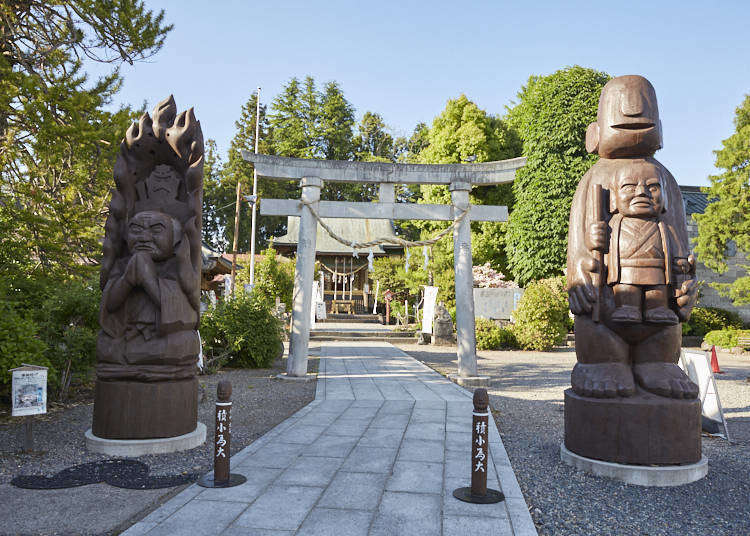
This day trip to Nikko was planned by Mr. Tetsu Morita, who was actively involved in the production of the Michelin Green Guide Japan. With his familiarity of Westerners’ tastes, he provides a view of Japan that even Japanese people themselves might not be aware of.
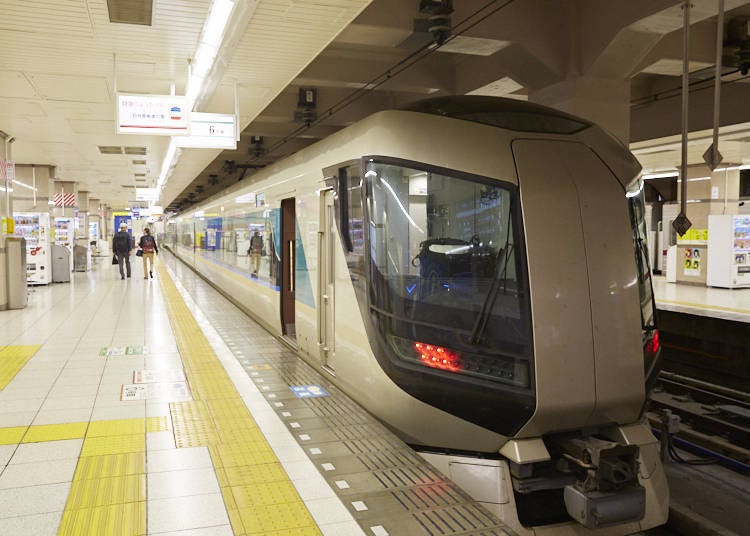
Probably Nikko Toshogu comes to mind for most people when Nikko is mentioned. This time, however, our theme is one of revisiting Nikko for the purpose of visiting those spots you missed seeing on your first visit.
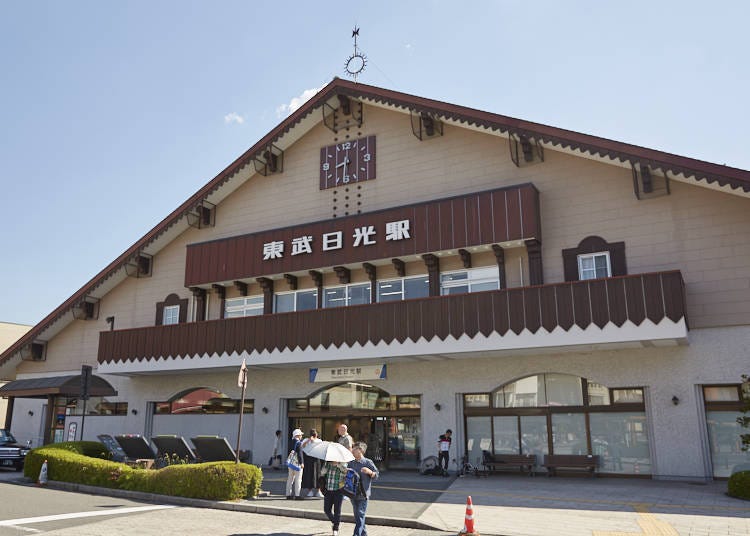
The best way to get to Nikko is by the Tobu Railway. The limited express Liberty Kegon from Tobu Asakusa Station will get you to Tobu Nikko in 1 hour and 50 minutes. If you catch the train departing Asakusa at 7:30 in the morning you will arrive in Nikko at 9:20 thus giving you a full day to explore Nikko.
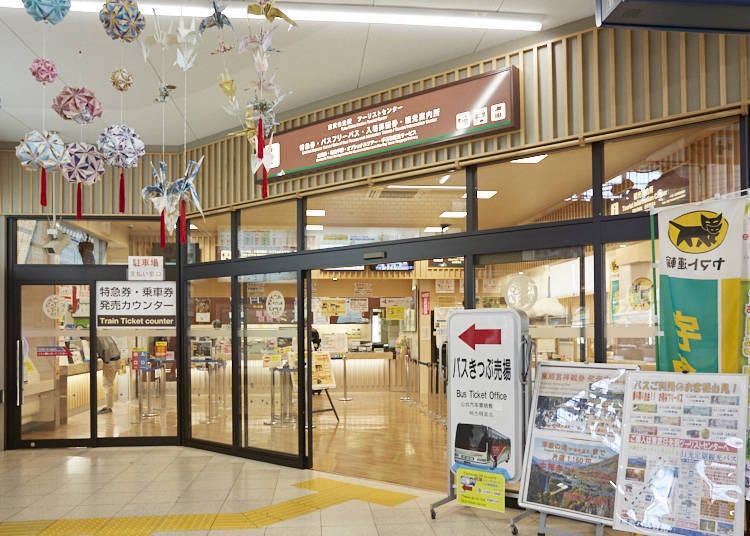
To get the most out of your sightseeing, we recommend purchasing the NIKKO PASS at Asakusa Station beforehand. Once you arrive at Tobu Nikko Station, first go to the Tourist Center in the station. Here at the Tobu Nikko Station Tourist Center you can purchase Nikko Toshogu Shrine, Nikkozan Rinnoji Temple, and Futarasan Shrine admission tickets. Getting these admission tickets beforehand means you won’t need to line up to get one at each place, thus making for smoother getting about. If you would like to stay longer in Nikko, you can also make arrangements for lodging here, too.
Tobu Nikko Tourist Center
Address: Inside Tobu Nikko Station
Open: 8:20 a.m. – 5:00 p.m.
Our English editor Timothy met Mr. Morita in front of Tobu Nikko Station. Both were pleased that the weather was so good.
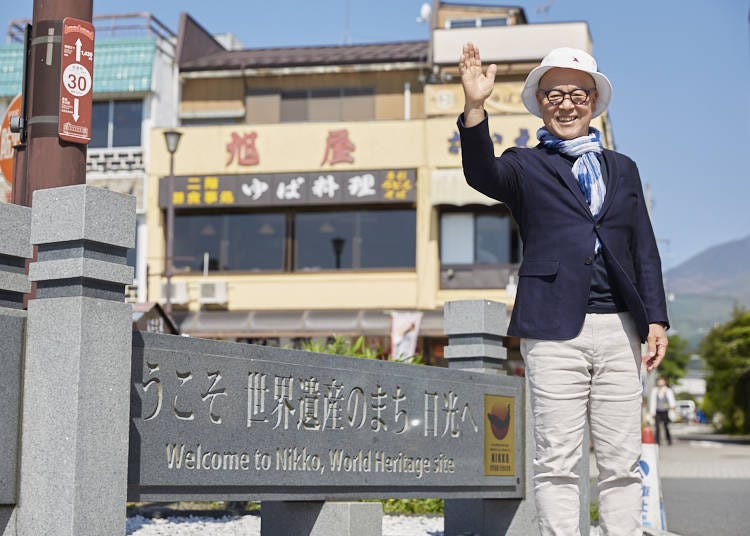
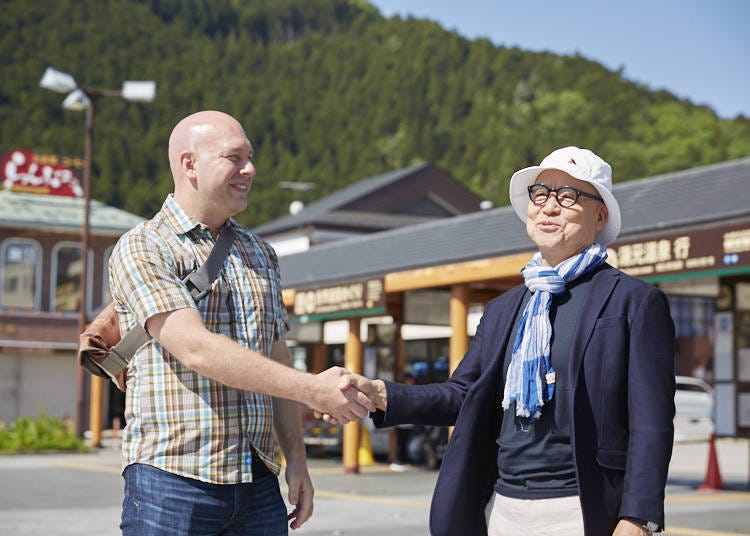
Morita: “Good morning, Timothy. Is this your first time in Nikko?”
Timothy: “Actually I’ve been here several times, but not to most of the spots listed on today’s itinerary. I’m really looking forward to strolling about Nikko on your ‘Second Visit to Nikko’ plan.”

Without further ado they boarded a Tobu Bus and set off for Oku Nikko. Leaving the central Nikko area, you get to Oku Nikko, which has several attractions such as Lake Chuzenji and Kegon Falls, by going towards the mountains located above the winding Irohazaka Road.
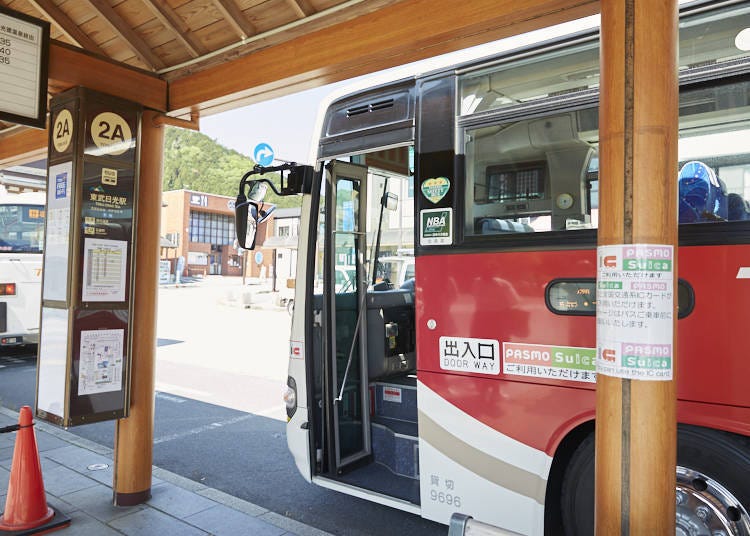
The Tobu bus takes you up the Irohazaka Road and into the Oku Nikko area. This is an area that has long been visited by foreign visitors, so in addition to Japanese, announcements made in the bus and on the monitor are given in three other languages: English, Chinese (Mandarin), and Korean. Free Wi-Fi is also available, which many travelers appreciate.

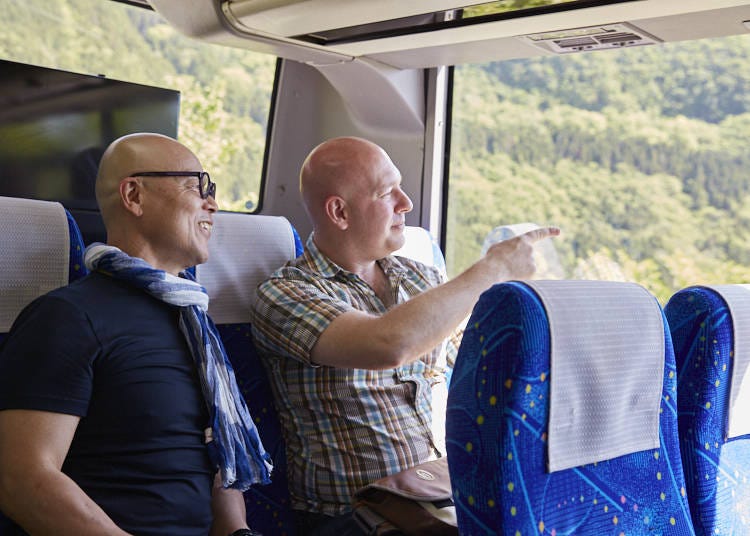
You can see many Nikko landmarks from the bus window, such as the Shinkyo Bridge. You can get a better view if you sit in the seats on the left side of the bus.
British Embassy Villa Memorial Park: Former lakeside home loved by British Ambassador Ernest Satow, fronts picturesque Lake Chuzenji
After leaving the hairpin curves of Irohazaka Road the bus makes its way towards the Lake Chuzenji Onsen station. There you transfer to a bus going towards Hangetsusan, get off at the Italian and British Embassy Villa Memorial Park stop, and then make your way to the British Embassy Villa Memorial Park, the first destination.
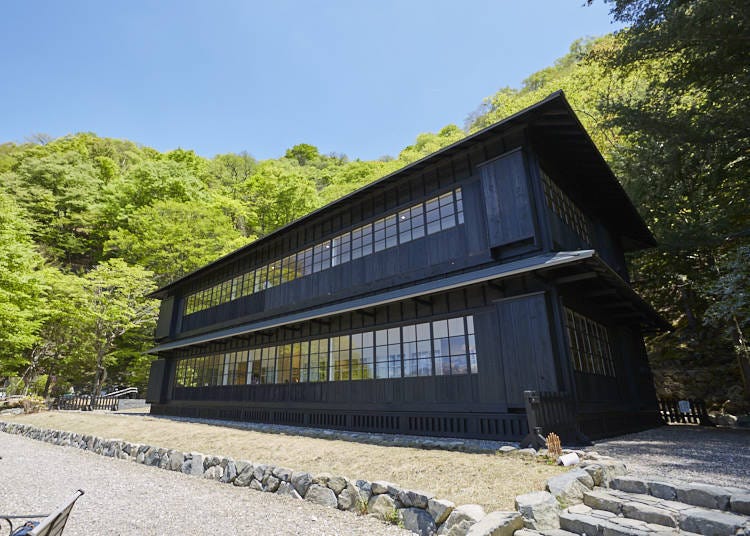
The British Embassy Villa Memorial Park sits by the shores of Lake Chuzenji. It was built for use as a villa by the British diplomat Ernest Satow in 1896 and later then used as a villa by the British Embassy for many years before being turned into this beautiful park.
Here visitors can relax and admire the picture-perfect view of beautiful Lake Chuzenji.
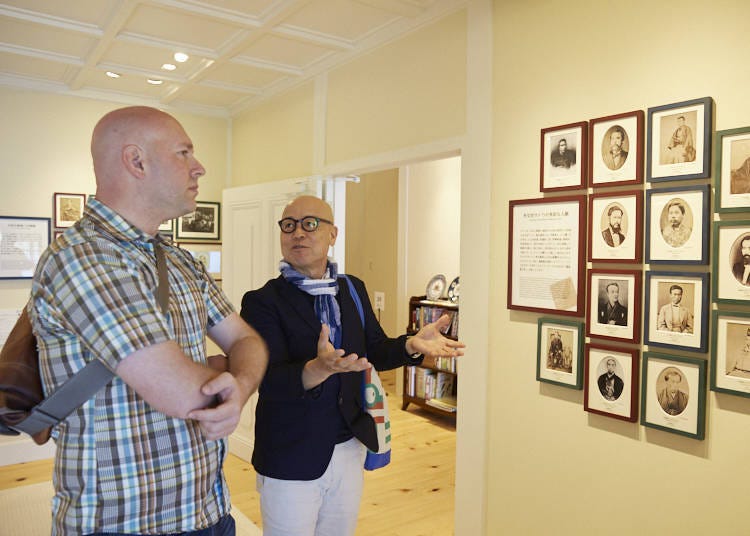
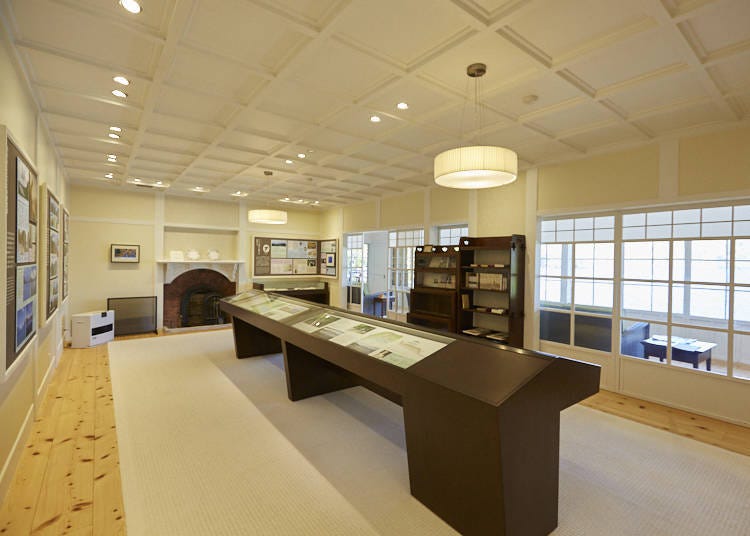
Morita: “Ernest Satow was a British diplomat who actively served from the end of the Edo Period up through the early Meiji Period. He first came to Japan in 1862 and served here for about 25 years in all. Perry came to Japan in 1853, which is also known here as the arrival of the Black Ships. After that, Yokohama developed into a port which opened the door to foreign trade in 1858. Between 1861 and 1865, America, as you know, was embroiled in its Civil War. So, he came to Japan the year after the American Civil War began.”
Timothy: “That was a tumultuous time in many parts of the world.”
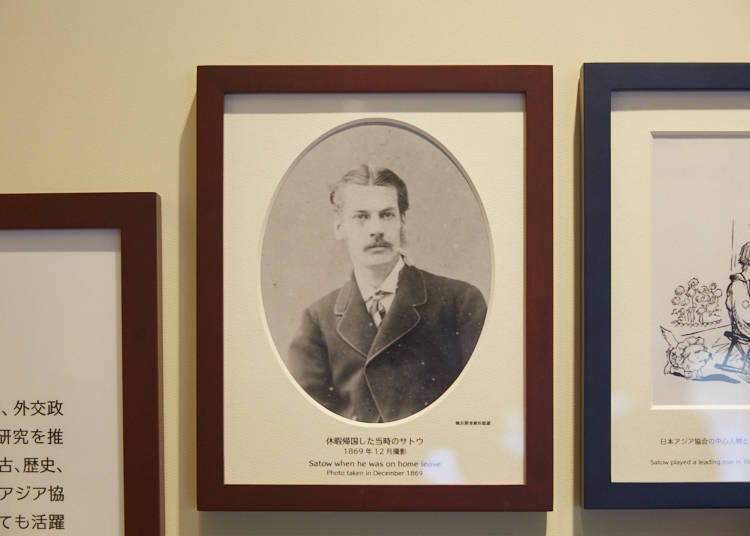
Morita: “Especially so for Japan. It could very well be called a ‘revolution’ because the opening of Japan by Western powers brought about the end of the Shogunate that had ruled for more than 200 years. Also in 1862 the Namamugi Incident occurred. An Englishman on horseback crossed in front of the procession of the Satsuma feudal lord and his retainers cut down the Englishman.”
Timothy: “I have heard about that.”
Morita: “The newly arrived Ernest Satow was tasked with writing an official report about that. It was Dr. Hepburn who treated the person who was attacked by the Japanese samurai. He developed the Hepburn method for Romanization of the Japanese language. There were quite a few foreigners in Yokohama at that time. Many of these came to Japan seeking Japanese silk!”
Timothy: “I see. I suppose that is when the Silk Road we saw in Hachioji became more widely used, then?”
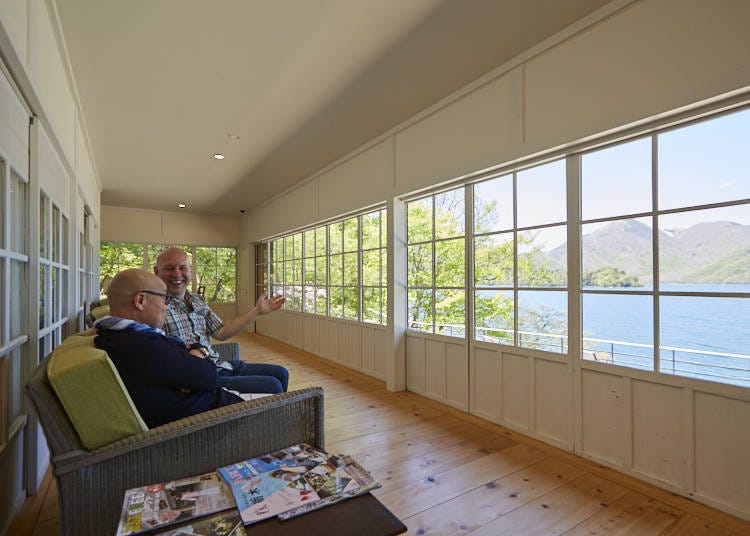
Morita: “Ernest Satow was also an alpinist who climbed many mountains in Japan, including of course Mt. Fuji. He was especially enamored with this area around Nikko and it was during his second tour of duty that he had his villa built here in 1896.

Timothy: “The view is outstanding today, huh! Fresh greenery, blue sky, and Lake Chuzenji. It would be easy to spend a whole day here doing nothing but appreciating the scenery. I imagine there were many days when Ernest Satow did exactly that here.”
Morita: “‘Fresh greenery’ is a fitting expression! Everything around us really does seem fresh and new.”
Timothy: “Absolutely. By the way, how did they manage to get all the building supplies here back in those days? Did the Irohazaka Road exist back then?”
Morita: “A road did already exist there, though it was not as well maintained as the current Irohazaka; they brought supplies up using it. There had always been small dwellings and huts in this area from olden times and ascetics and mountain worshipers stayed in them before making their pilgrimages to Mt. Nantai, Mt. Nyoho, and Mt. Taro. More likely than not, Ernest Satow probably spent a night in one of those places. It also probably inspired him to make his own mountain retreat here.”
Located next to the British Embassy Villa Memorial Park is the Italian Embassy Villa Memorial Park. We were given special permission to visit the garden of the Italian Embassy Villa Memorial Park.

Timothy: “It’s nice being able to get so close to the lake, isn’t it?”
Morita: “Lake Chuzenji is at an elevation of 1,269 meters, making it the highest lake in Japan.”
Timothy: “It seems somewhat curious for a lake to be at such a high elevation.”
Morita: “The lake was created when Mt. Nantai erupted. It has a depth of 163 meters, too. Being a dammed lake, the water released from it flows out through Kegon Falls.”
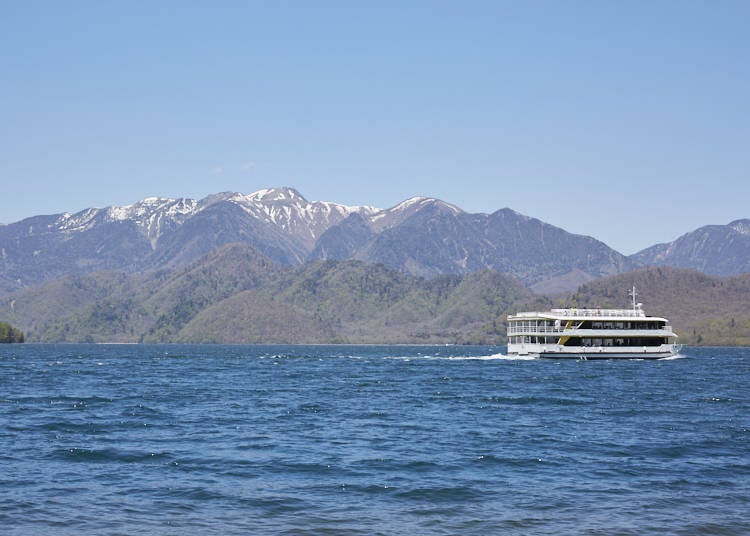
-

-
Address
Chuguushi, Nikko-shi, Tochigi, 321-1661
View Map -
Nearest Station
Tobu Nikko Station (Tobu Nikko Line)
- Phone Number 0288-55-0880
-
Address
Chuguushi, Nikko-shi, Tochigi, 321-1661
Nikko Kanaya Hotel History Museum: The "Samurai House" where Isabella Bird stayed
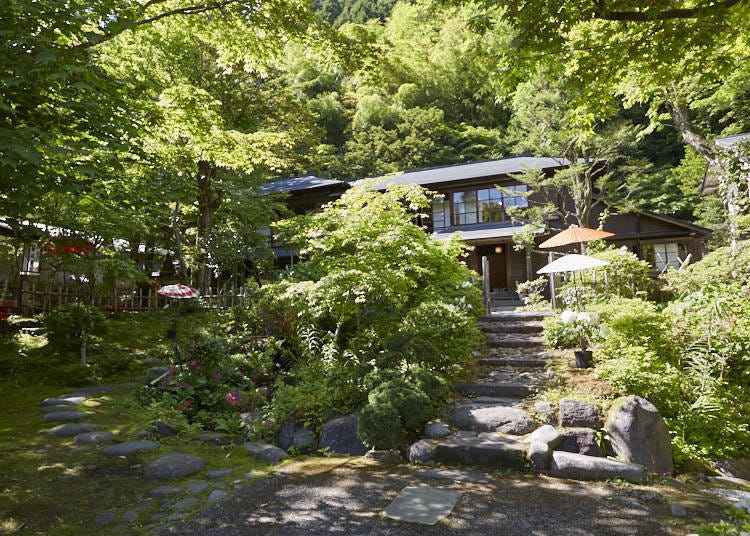
After enjoying the beautiful view of Lake Chuzenji Mr. Morita and Timothy went back down the Irohazaka Road and headed to the Nikko Kanaya Hotel History Museum. This Kanaya Hotel History Museum is a valuable historical and cultural asset that remains in its original form left by the founder of the Kanaya Hotel which is famous for being "the oldest resort hotel in Japan" and also a symbol of Nikko.
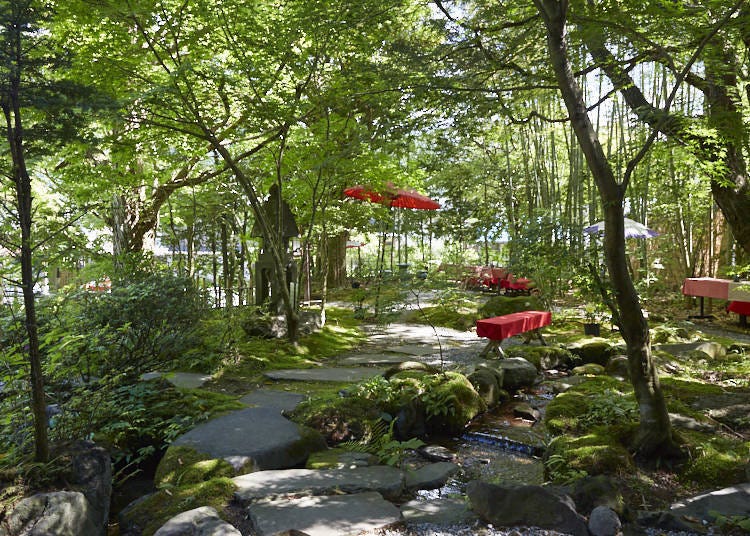
The Kanaya Cottage Inn, which opened for business in 1873, was a popular resort for foreigners. This included British explorer Isabella Bird, who called it “Samurai House”.
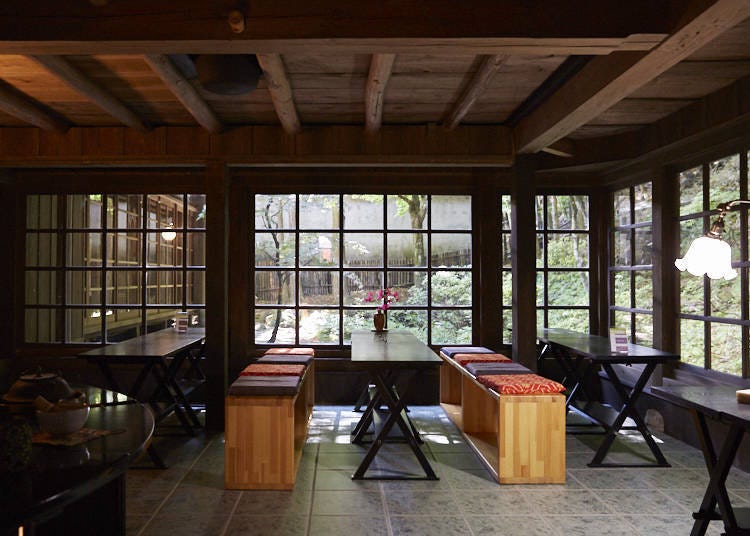
Timothy: “The Kanaya Hotel comes to mind when mention is made of Nikko. So, this is the cottage from where it all began!”
Morita: It opened in 1873, ten years after Ernest Satow arrived in Japan. That was also the year that Christianity was officially recognized in Japan.”
Timothy: “How come a hotel for Westerns was built here?”
Morita: “The history of the Kanaya Hotel begins in 1873 when Dr. James Curtis Hepburn, who resided in Yokohama, visited Nikko. Hepburn arrived in Japan in 1859 and died here in 1911. He developed the Hepburn Romanization system for transliteration of the Japanese language into the Latin alphabet and was also the first person to translate the Bible into Japanese. He also is the founder of Meiji Gakuin University.
Timothy: “So Hepburn also visited Nikko?”
Morita: “More likely than not Ernest Satow probably told him about how wonderful Nikko was. At that time, Zenichiro Kanaya invited Mr. and Mrs. Hepburn to stay at his house.”
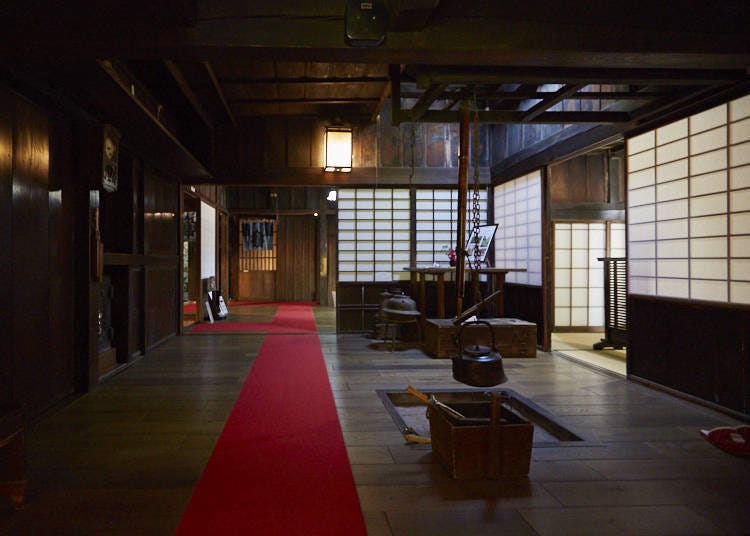
Timothy: “So I suppose then that he was the founder of the Kanaya Hotel?”
Morita: “During the Edo Shogunate the Kanaya Family were musicians at the Nikko Toshogu Shrine. That is the equivalent of being court musicians. Only samurai of the highest rank were entrusted with being musicians at the Toshogu, which is the tomb of the great Shogun Ieyasu Tokugawa, so that is why his home was so large. The building was originally constructed as a samurai estate more than 400 years ago.”
Timothy: “And it is this home that became the Kanaya Hotel History Museum.”
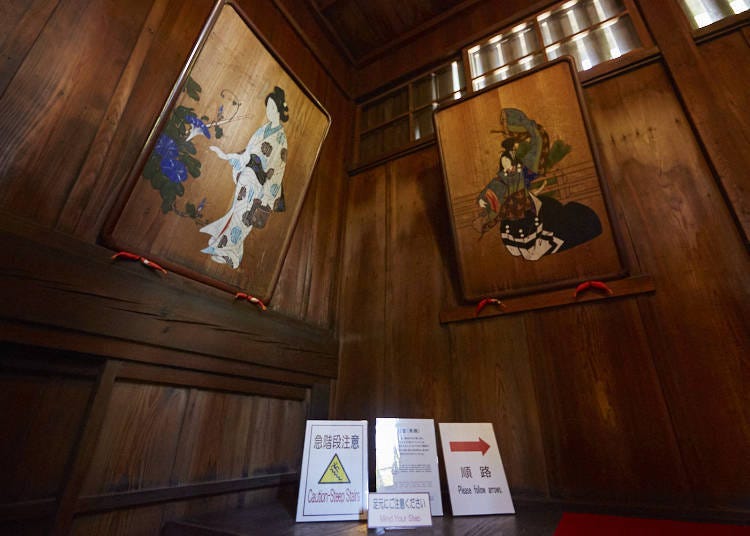
Morita: “Precisely. It has been maintained almost perfectly in its original state. When the Hepburns stayed here they encouraged Zenichiro Kanaya ‘to build a hotel in Nikko because many foreigners would definitely wish to visit here.’ Following that advice, Mr. Kanaya opened the Cottage Inn.”
Timothy: “I see!”
Morita: “The place soon became popular with travelers who affectionately called it the ‘Samurai House’.”
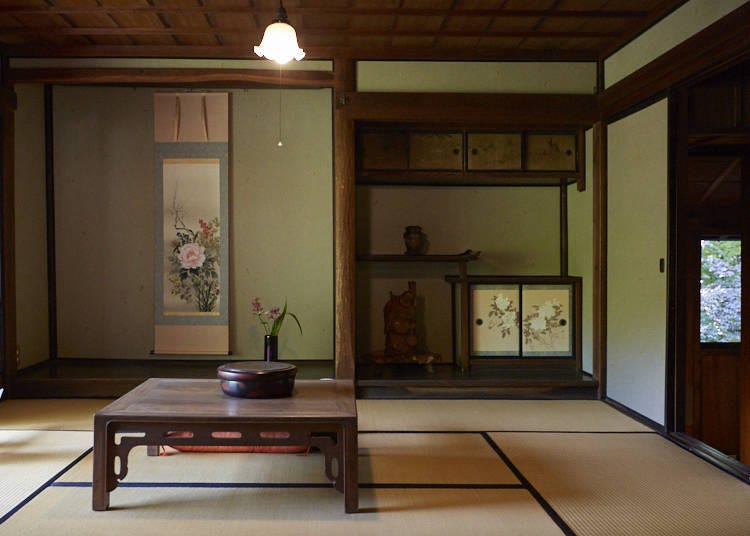
Morita: “This is the room in the Cottage Inn where Isabella Bird stayed. She wrote about her impressions and adventures in great detail in her travel diary Unbeaten Tracks in Japan. Isabella Bird came to Japan in June 1878 and then spent three months traveling, first from Tokyo to Nikko and then from Niigata to Hokkaido by Kitamaebune, a merchant ship used during the Edo and Meiji periods. The Japanese title of her book, Unbeaten Tracks in Japan, is Nihon Okuchi Kiko. It rather reads like, ‘this is a course I took exploring the deeper reaches of Japan that absolutely no one else could do’, don’t you think?”
Timothy: “Yes, I’d have to agree with you. I think she was really a remarkably strong woman with an intrigue for forging into the then-unknown parts of Japan. She was 47 years old when she came to Japan and the book is a first-hand account tracing her solo travels. Truly more of an adventurer than just a mere traveler.”

The Cottage Inn Restaurant is part of the Kanaya Hotel History Museum. Here you can enjoy dishes made with a combination of high-quality ingredients and bread from the Kanaya Hotel Bakery, which also has a history of almost 100 years.
They had lunch at the Cottage Inn Restaurant.

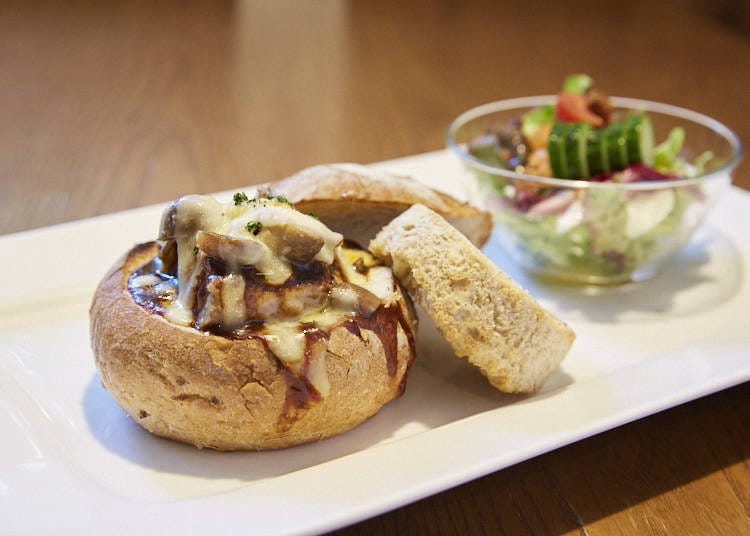
Mr. Morita ordered an open sandwich of pan-fried Yashio Masu (rainbow trout) raised in Tochigi (1,300 yen including tax) and Timothy selected the bread gratin in the center of which was hamburger and stew (2,160 yen including tax).
Morita: “The Kanaya Hotel bread is famous. The rainbow trout is refreshingly delicious.”
Timothy: “The hamburg gratin is also deliciously filling! The stew has a rich, thick flavor.”
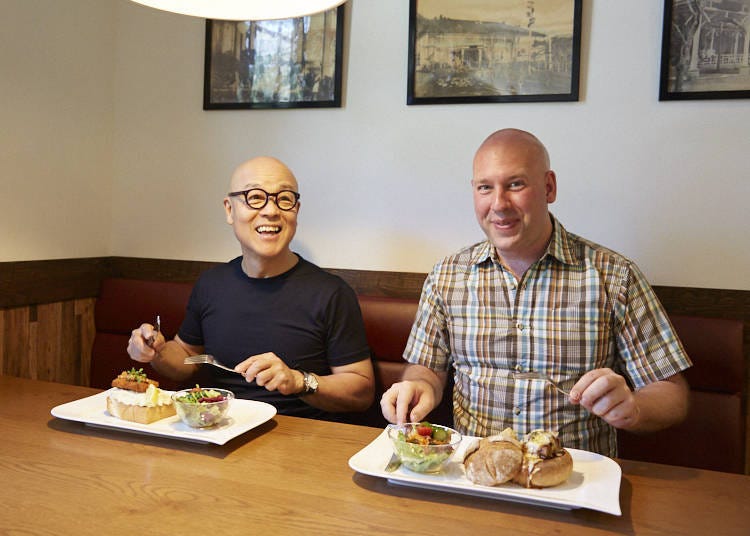
-
Kanaya Hotel History Museum金谷ホテル歴史館
- Address 1-25 Honcho, Nikko City, Tochigi Prefecture 321-1434
- Phone Number 0288-50-1873
Open: March – November, 9:30 a.m. – 4:30 p.m. (Last admission 4:00 p.m.)
December – February 10:00 a.m. – 3:00 p.m. (Last admission 2:30 p.m.)
Closed: March – November always open
December – February, 2 or 3 times each month
Cedar Avenue of Nikko: Spiritual avenue with a total length of 37 km
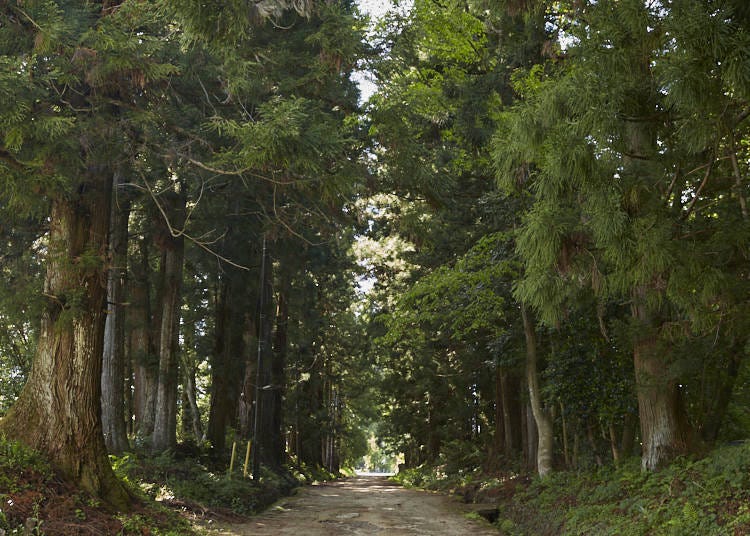
After enjoying a delicious lunch at the Cottage Inn Restaurant, Mr. Morita and Timothy took a stroll along the Cedar Avenue of Nikko which is recognized by the Guinness Book of Records as the "longest tree-lined avenue in the world". It extends for 37 kilometers and is lined by about 12,400 trees in total.
Morita: “If you come to Nikko then you really must walk along this avenue of cedars. Isabella Bird also wrote about it in her book.”
Timothy: “How did this tree-lined avenue come about?”
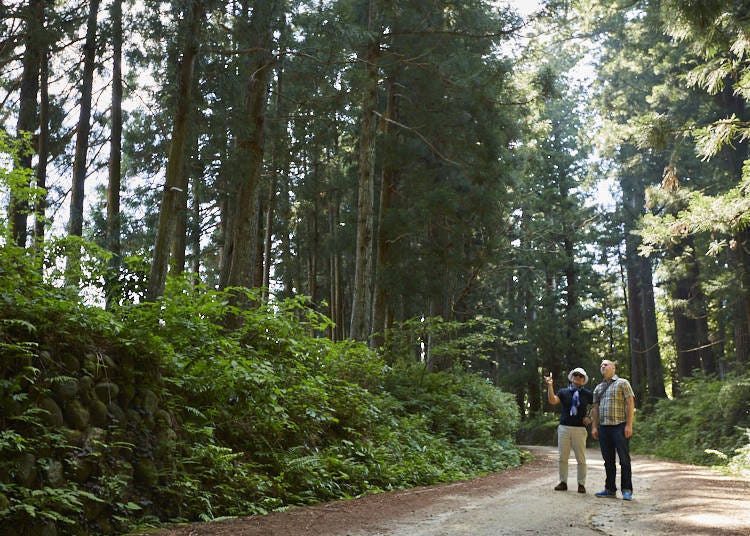
Morita: “During the Edo period many Daimyo [feudal lords] visited Nikko Toshogu Shrine to pay homage at the tomb of Shogun Ieyasu Tokugawa. It was considered to be a display of loyalty towards the Shogunate. They made various kinds of donations and maintained the upkeep of the road. The first Daimyo to plant cedar saplings as a donation was Masatsuna Matsudaira of Kawagoe. At the time other Daimyo belittled him behind his back for ‘being so cheap’.”
Timothy: “Well, he did only plant saplings (lol).”
Morita: “At the time, when the lord planted those cedar saplings as a donation, he was reported to have said, ‘Look at the future when you see them’.”
Timothy: “And then those saplings grew into these majestic cedars and became the world’s longest tree-lined avenue.”
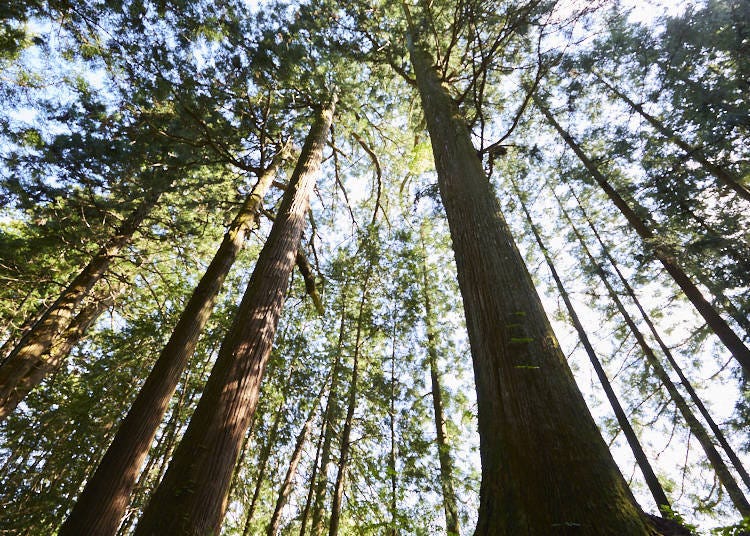
-
Cedar Avenue of Nikko日光杉並木
- Address 713 Moritomo, Nikko, Tochigi 321-2335
Museum of History and Folklore and the Sontoku Ninomiya Memorial: Observe the history of the syncretism of Shinto and Buddhism

Nikko is also the place where Sontoku Ninomiya (Kinjiro Ninomiya) spent his final years. When visiting Odawara, Mr. Morita and Timothy also visited Hotoku Ninomiya Shrine, where Sontoku Ninomiya is enshrined, and the Hotoku Museum, so naturally they also paid a visit to the facility about Sontoku here. First, they headed to the History and Folklore Museum and the Ninomiya Sontoku Memorial where you can learn about his life, his thinking about Hotoku [moral requital], and the history of faith starting from the mountain worship in Nikko.
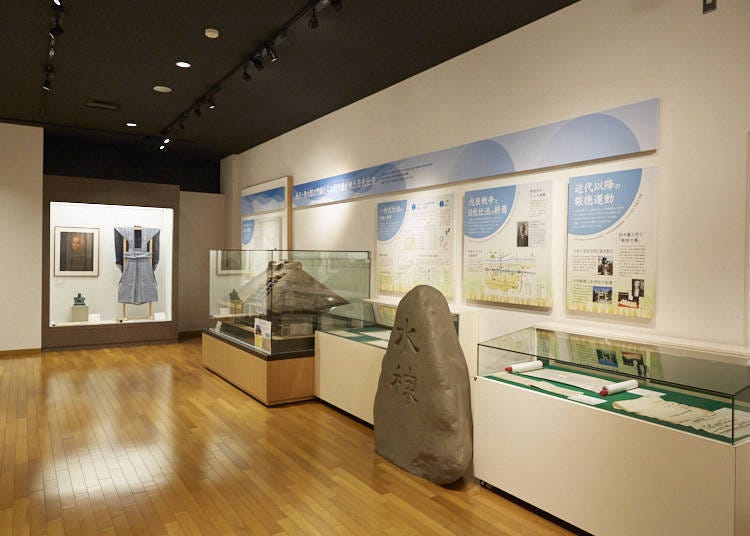
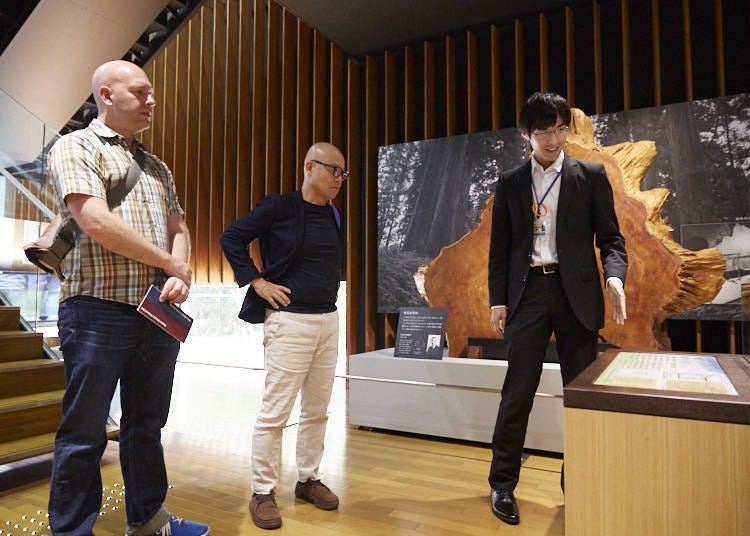
Timothy: “Is this where Kinjiro Ninomiya passed away?”
Morita: “Yes, that’s right. His last work was an effort to redevelop the villages in the Nikko area. There is something I want to show you in the upstairs exhibition room.”
Timothy: “If I understand correctly, it's about Japanese religious views, such as mountain worship and Buddhism, right?”
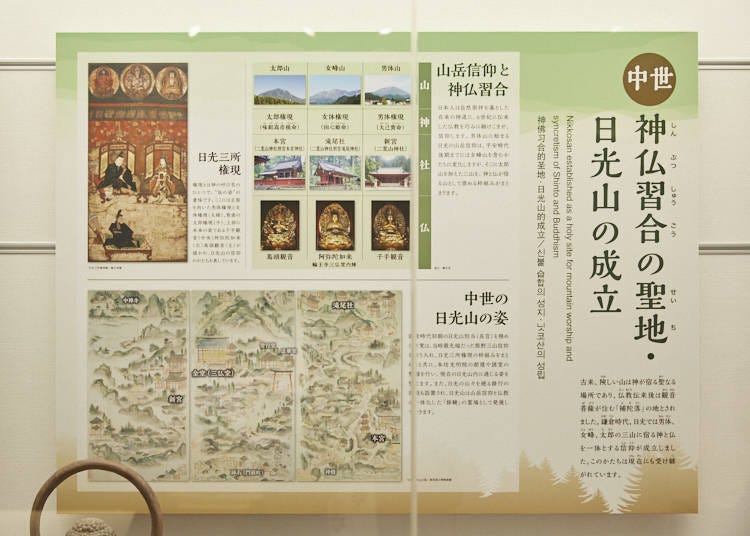
Morita: “Buddhism fused with mountain worship. This painting is rather interesting, I think. The three individuals in the mountains are the gods of the mountains. These are the gods Mt. Nantai, Mt. Nyoho, and Mt. Taro. And above the clouds is the Buddha. The gods and the Buddha become one and this is called the syncretism of Shinto and Buddhism. In other words, the gods of ancient beliefs and the new religion of the Buddha that came from Asia coexist with one another.”
Timothy: “So both temples and shrines in Japan have their roots here.”
Morita: “Yes, exactly so. At the start of the Meiji Era the government issued an edict in 1868 ordering the separation of Shinto and Buddhism; essentially separated the gods from the Buddha. As a result, the gods were given prominence and the Buddha was considered not to be important according to broad interpretations by many people which resulted in a movement to abolish Buddhism. Consequently temples and Buddhist images were burned and destroyed.”

-
Nikko Museum of History and Folklore and Sontoku Ninomiya Memorial日光市歴史民俗資料館・二宮尊徳記念館
- Address 304-1 Imaichi, Nikko, Tochigi 321-1261
- Phone Number 0288-25-7333
Open: 9:00 a.m. – 6:00 p.m. *Admission until 5:15 p.m.
Closed: Mondays, national holidays (if Monday falls on a national holiday then closed the following day), year-end (Dec. 29 – Jan. 3), when exhibitions are changed
Hotoku Ninomiya Shrine: Grave of Sontoku Ninomiya, where there are both gods and the Buddha
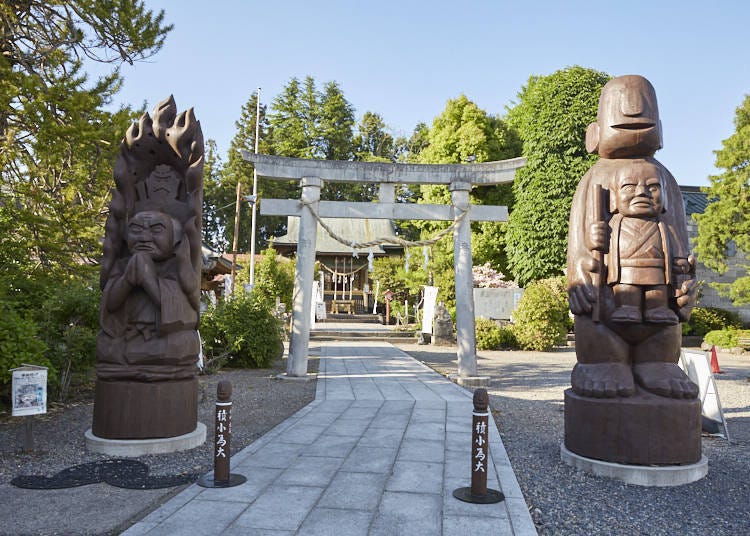
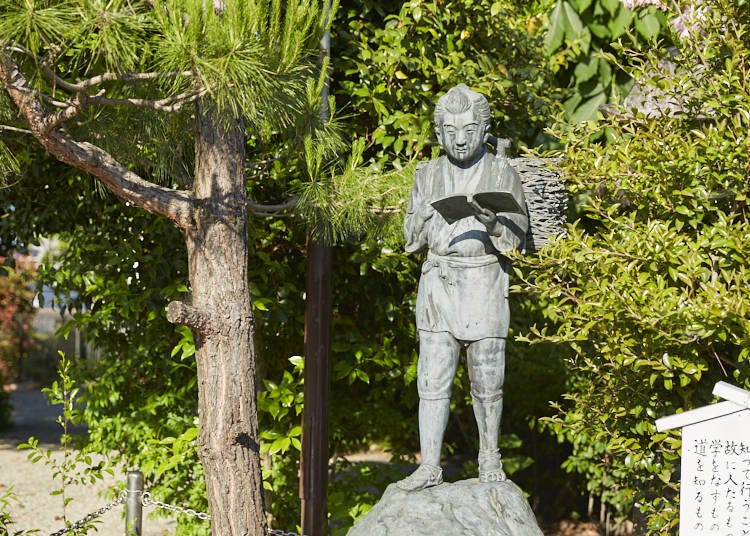
Finally, they went to the Hotoku Ninomiya Shrine where the grave of Sontoku Ninomiya is located. Mr. Setsushi Takeuchi, the chief priest of the shrine, told them about Sontoku's grave. The final wishes of Sontoku, who practiced simplicity and frugality, were that there be no gravestone, however, contrary to his wishes his followers erected one to cherish his memory.
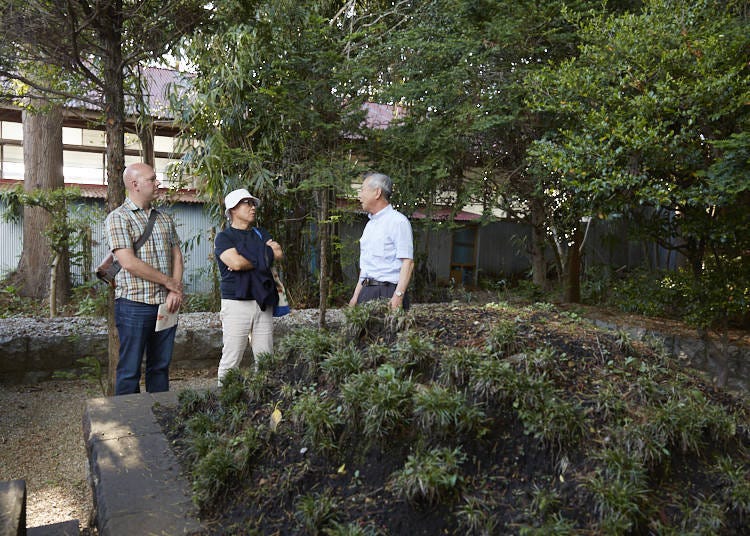
Morita: “Is this the grave of Sontoku Ninomiya? It’s just a mound of earth as he wished.”
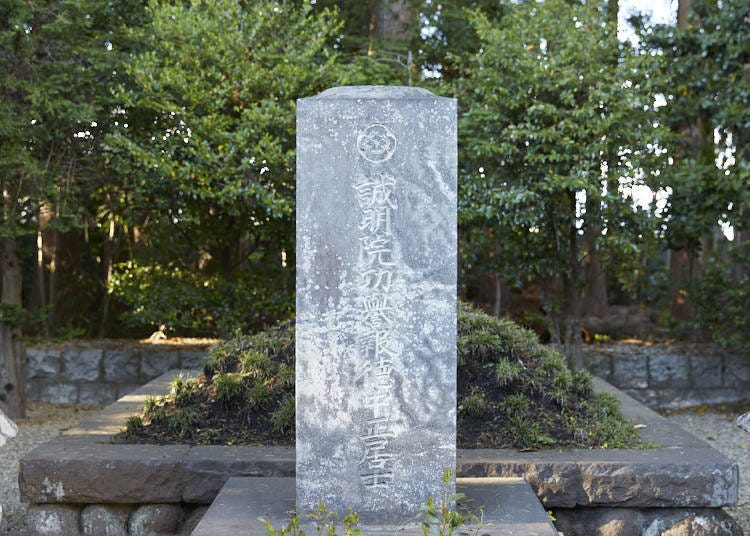
Takeuchi: “It’s called a ‘burial mound’. Kinjiro was laid to rest in a burial urn beneath it.”
Morita: “In Shinto the deceased becomes a god, but in Buddhism a posthumous Buddhist name is given. They become a god and also a Buddha.”
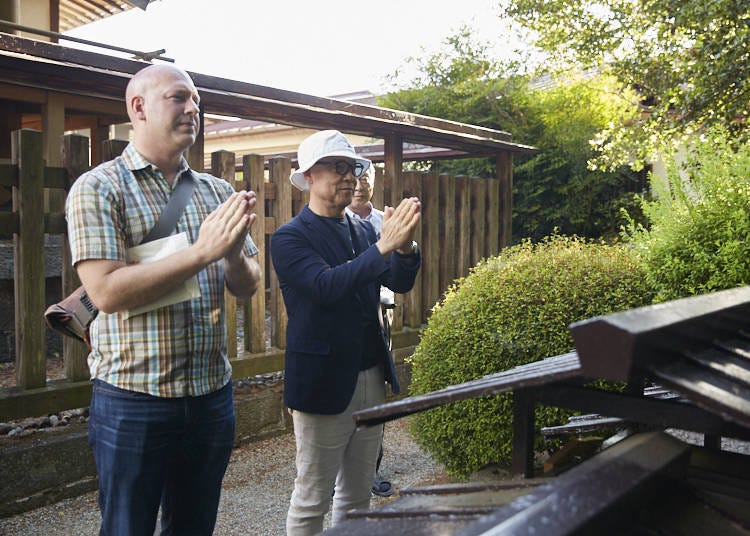
Timothy: “What is the best way to pay one’s respects?”
Takeuchi: “Bow twice, clap your hands twice, and bow once more.”
Timothy: “I did just obtain a goshuin seal, so may as well offer my respects.”
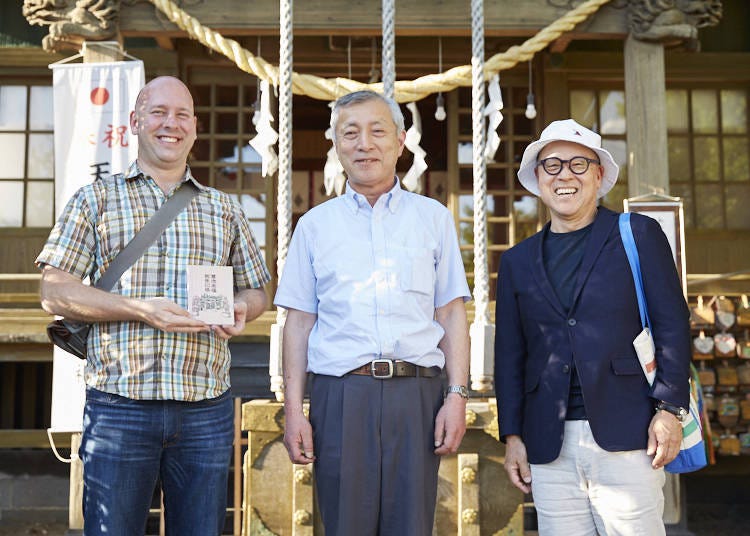
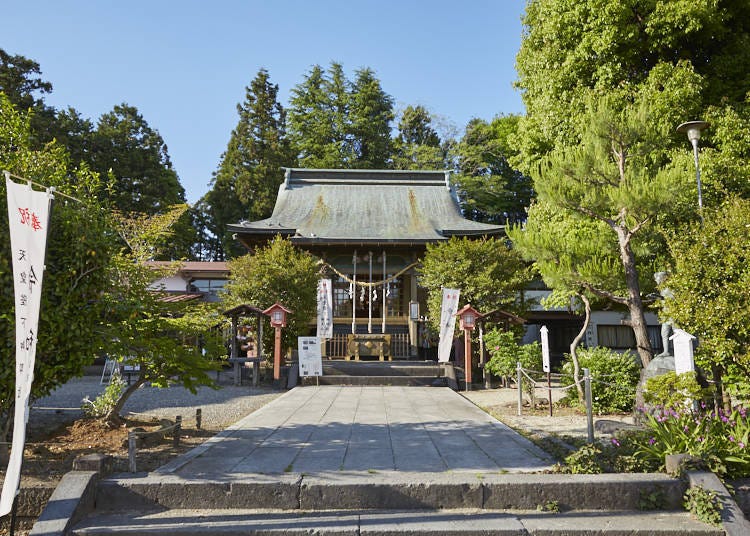
-
Hotoku Ninomiya Shrine報徳二宮神社
- Address 743 Imaichi, Nikko, Tochigi 321-1261
- Phone Number 0288-21-0138
For Timothy, this trip to visit spots other than Nikko Toshogu and other places he missed in his previous travels, turned out to be one that gave him deeper insights into mountain worship.
Morita: “We could see Mt. Nantai and the other mountains today because the weather was so nice. One of today’s themes was about how Japanese traditionally viewed their relationship with nature. Were you able to get a better understanding of Nikko being a sacred place of mountain worship?”
Timothy: “Initially I had trouble understanding what ‘mountain worship’ was all about. But after today’s visit, I could grasp the concepts of mountain worship and understand a bit better about the curious relationship between Shinto and Buddhism. When I first came to Japan and it was explained that the gods [kami] in Japan where everywhere, I took it to mean that God was everywhere, as in the Christian sense. But after living in Japan for many years, I came to realize that there is a different nuance indeed. Rather than one God who was omnipresent, it seems that Japanese tend to believe that a kami exists in many places and things.”
Morita: “That’s right. In that sense, God, with a capital ‘G’ is always singular and considered to be the one and only god. In Japan, there are 8 million gods [kami] of all sorts, so we speak of gods in the plural. This is an important point to remember when trying to understand Japanese religious beliefs. Since the Jomon Age that has been the core belief of Japanese. Mt. Nantai in Nikko is also called Mt. Futara and is the main object of worship at the Futarasan Shrine, but whether that mountain is a god or whether there is a god in that mountain, I'm not really sure.”
Timothy: “Still, seeing these beautiful mountains in this beautiful natural setting instills respect for them.”
Morita: “Exactly! The essence of Shintoism is respect for nature. Having that belief and visiting a special mountain is mountain worship and probably is a good way to be guided, don’t you think?”
Timothy: “Ultimately, Nikko did not become a sacred place of mountain worship because Toshogu Shrine was located here. Rather because from ancient times it was considered to be sacred to mountain worshipers, and for that reason Shogun Ieyasu’s grave was built in Nikko. And that is the Toshogu Shrine.”
Timothy greatly enjoyed his trip to Nikko and during it was able to gain a deeper insight into another cultural view of the Japanese that has existed since ancient times.
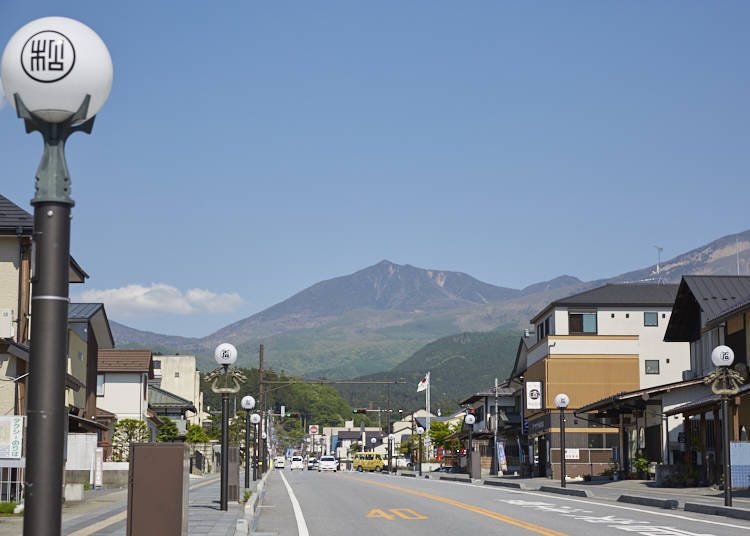
- Area
- Category
*Prices and options mentioned are subject to change.
*Unless stated otherwise, all prices include tax.
Popular Tours & Activitiess
Recommended places for you
-

LaLaport TOKYO-BAY North Building Now Open: Shop, Dine & Enjoy Events at LaLa arena, Just 2 Stops from Disney
by: Wemmy Chau
-

See Asakusa and Tokyo Skytree® in a New Light at the "Také Akari" Festival (Winter 2025-2026)
by: Guest Contributor
-

2025 Autumn Colors Report: Kurobe Gorge Nearing Peak
by: Timothy Sullivan
-

2025 Japan Autumn Color Report: Tokyo's Ginkgo Trees Starting to Glow
by: Timothy Sullivan
-

Enjoy Japan's Gorgeous Winter Lights! Ride the Romancecar to Shonan no Hoseki Illumination
by: Guest Contributor
-

A Travel Game Changer! Go Hands-Free Between Tokyo and Kyoto with LUGGAGE EXPRESS by JTB and JR Tokai
by: Guest Contributor
Inspiration for Accommodations
-

Enjoy Mt. Fuji from the Comfort of Your Room! Recommended Ryokan with Mt. Fuji View
-

Stay Near the Cherry Blossoms! Hotels for Cherry Blossom Viewing in Tokyo
-

Family-Friendly Hotels with Free Shuttle to Disneyland: Convenient Access for a Magical Stay
-

Top Ranked Hakone Hotels with Mt. Fuji View: Enjoy Stunning Scenery from Your Private Space
-

Convenient Tokyo Hotels with Airport Shuttle: Ideal for Families and Heavy Luggage
-

Stunning Tokyo Tower View Hotels: Enjoy Spectacular Scenery from Your Private Space
-

Convenient Asakusa Hotels with Kitchens: Ideal for Extended Family Visits
-

Experience Luxury: Hakone's 10 Best Five-Star Accommodations
-

Enjoy Mt. Fuji Autumn Leaves! Top Hotels Near the Popular Autumn Leaves Corridor
-

Experience Hakone Fall Foliage from Your Room with Stunning Views
-

Numazuko Kaisho in Ueno: Good Quality, All-You-Can-Eat Seafood for Just US$12!?
-

Tokyo Roppongi: 5 Most Amazing Spots at Roppongi Hills and How to Make the Best of Them!
-

Complete Guide to Buying Japanese Medicine in Japan: Phrases and Vocabulary You Need to Know
-

Explore, Eat, Relax - Welcome to the World of Onsen Gastronomy! Travel Japan's countryside, expand your culinary horizons, and soak in sumptuous hot springs
-

Day Hiking Near Tokyo: 6 Easy Hikes You Can Do While Visiting Japan
-

Exploring Tokyo: 4 Must-Visit Spots around Tokyo Station
- #best ramen tokyo
- #what to buy in ameyoko
- #what to bring to japan
- #new years in tokyo
- #best izakaya shinjuku
- #things to do tokyo
- #japanese nail trends
- #what to do in odaiba
- #onsen tattoo friendly tokyo
- #daiso
- #best sushi ginza
- #japanese convenience store snacks
- #best yakiniku shibuya
- #japanese fashion culture
- #best japanese soft drinks



















